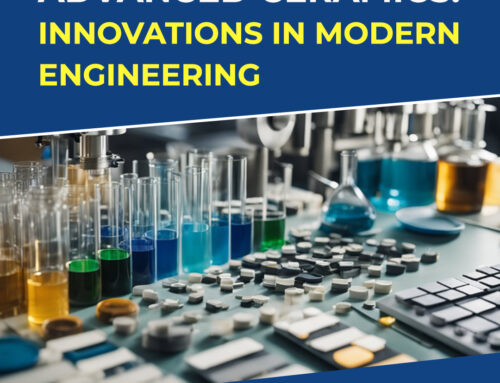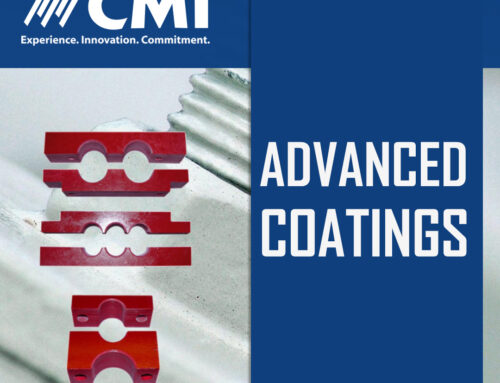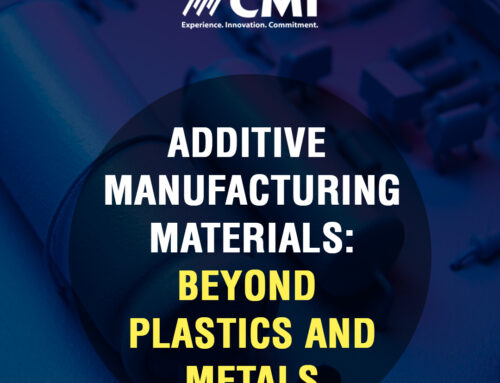
Aerospace ceramics play a crucial role in the evolution of aviation and space technology. These materials are vital due to their impressive ability to withstand extreme temperatures and resist corrosion. This makes them perfect for demanding aerospace applications, where reliability and performance are key.
In addition to thermal and chemical resistance, these ceramics offer significant weight reduction, which helps improve the efficiency of aircraft and spacecraft. As fuel efficiency becomes increasingly critical, the aerospace industry is relying more heavily on lightweight materials. These advantages make advanced ceramics an essential component in modern aerospace engineering.
With ongoing advancements in manufacturing techniques, the use of advanced ceramics in the aerospace sector continues to grow. From engines to structural components, these materials contribute to the development of innovative solutions that push the boundaries of aerospace capabilities.
Key Takeaways
Advanced ceramics are crucial for temperature and corrosion resistance.
Lightweight ceramics enhance the efficiency of aircraft and spacecraft.
Manufacturing advancements enhance ceramics’ applications in aerospace.
Types of Aerospace Ceramics
Advanced ceramics in aerospace play a crucial role due to their unique properties, including high-temperature resistance and lightweight nature. Each type serves specific functions, providing solutions for durability and performance in extreme conditions.
Silicon Carbide
Silicon Carbide (SiC) is highly valued in aerospace for its exceptional thermal conductivity and wear resistance. SiC is commonly used in high-temperature environments, such as turbines and heat shields.
SiC/SiC ceramic matrix composites reinforced with high-strength SiC fibers offer added strength and durability. This combination makes them suitable for components that endure significant thermal and mechanical stress. SiC’s hardness and ability to withstand corrosion make it an ideal material for applications that require prolonged exposure to harsh conditions.
Alumina
Alumina (Aluminum Oxide) is one of the most commonly used ceramics due to its versatility and cost-effectiveness. Known for its excellent electrical insulation and high thermal conductivity, alumina is utilized in various components, including sensors and insulators.
Its ability to maintain structural integrity at high temperatures is especially valuable in jet engines and other high-heat environments. Many manufacturers offer alumina in various purities, ranging from 74% to 99.96%, enabling customization tailored to specific aerospace needs.
Silicon Nitride
Silicon Nitride (Si3N4) is appreciated for its strength, toughness, and thermal shock resistance. It is an excellent choice for applications such as bearings and turbine blades that operate under rapid temperature fluctuations. Silicon nitride’s low density contributes to reduced weight, which is crucial in spacecraft and aircraft.
Its ability to resist wear and oxidation ensures longevity and reliability in crucial components. Engineers often rely on silicon nitride to maintain performance while reducing maintenance needs, making it a cost-effective choice in the long run.
Zirconia
Zirconia stands out for its high fracture toughness and thermal insulation properties. It is often used in high-temperature sensors and as a thermal barrier coating in engines. Zirconia’s role in improving engine efficiency cannot be overstated, as it helps maintain optimal operating temperatures and prevents heat-related failures.
Zirconia-toughened alumina (ZTA) combines the toughness of zirconia with the hardness of alumina, providing durable and wear-resistant components. This blend is beneficial in environments with critical mechanical strength and thermal stability.
Properties and Advantages
Advanced ceramics in aerospace offer numerous benefits, including superior stability at high temperatures, resistance to wear, lightweight properties, and adequate corrosion resistance. These properties make them essential in modern aviation and space applications.
High-Temperature Stability
Ceramic materials are known for their ability to withstand extremely high temperatures. This feature is crucial in aerospace as engines and other components routinely face intense heat. Alumina, a standard ceramic, offers excellent thermal conductivity and insulation properties. Such properties help components maintain their integrity despite thermal fluctuations. Even when exposed to conditions exceeding typical metallic thresholds, ceramics do not degrade as quickly, ensuring the reliability and longevity of aerospace parts.
Wear Resistance
Aerospace environments subject materials to friction and exposure to debris, leading to wear. Ceramics excel in resistance to wear due to their hardness and strength. This quality reduces the frequency of maintenance and replacement needs, saving costs and time. Advanced ceramics withstand surfaces rubbing against each other without losing effectiveness. As a result, ceramics contribute to the durability and reliable operation of various aircraft components under harsh operating conditions.
Lightweight
Weight is a critical consideration in aerospace engineering. Advanced ceramics offer the advantage of being lighter than many of their metal counterparts. Reducing the weight of components without compromising on strength or durability helps boost fuel efficiency and performance. This property enables engineers to design more efficient and high-performing aerospace vehicles. Despite being lightweight, ceramics maintain ruggedness, ensuring that safety and effectiveness are never compromised.
Corrosion Resistance
Aerospace components often encounter challenging environmental conditions, including exposure to different chemicals and moisture. For this reason, corrosion resistance is a vital property. Ceramic materials are highly resistant to corrosion and degradation. This resilience ensures that the components have a longer lifespan, consistently meeting safety and performance standards. Additionally, corrosion resistance leads to fewer component failures, enhancing both safety and reliability in aerospace applications.
Fabrication and Manufacturing Techniques

Advanced aerospace ceramics require specific methods to ensure their high quality and performance. This section covers critical manufacturing techniques like sintering, hot isostatic pressing, additive manufacturing, and injection molding. Each method contributes unique advantages in producing practical ceramic components.
Sintering
Sintering involves heating ceramic powders below their melting point to bond them together. This process enhances the material’s strength and density. Ceramics are placed in a furnace where they’re subjected to carefully controlled heat. The particles coalesce without entirely melting, which helps retain their shape while enhancing mechanical properties.
A significant advantage of sintering is its ability to produce complex shapes economically. The technique remains essential in industries where durable, heat-resistant ceramics are needed.
Hot Isostatic Pressing
Hot isostatic pressing (HIP) uses high-pressure gas at elevated temperatures to improve material density. Ceramic components are exposed to isotropic pressure in a sealed chamber, compressing the material from all sides. This technique reduces porosity and enhances mechanical properties.
HIP is particularly valuable for aerospace components that demand high performance. It enables the creation of parts with fewer defects, resulting in longer-lasting and more reliable applications.
Additive Manufacturing
Additive manufacturing, also known as 3D printing, represents a modern approach to creating ceramics by building parts layer by layer. This technique allows for significant innovations in design flexibility and material efficiency. It enables the production of intricate structures that would be difficult or impossible to achieve using traditional methods.
The precision of additive manufacturing reduces waste and enables customization, making it a popular choice in industries that require specific and complex designs.
Injection Molding
Injection molding involves forcing liquid ceramic materials into molds to create detailed parts. Once cooled, the ceramics solidify into their intended shapes. This method allows for high-volume production with consistent and repeatable results.
Injection molding is advantageous for producing parts with intricate details and precise dimensions. It offers efficiency in creating small, precise ceramic components suitable for various industrial applications.
Applications in Aerospace
Advanced ceramics play a crucial role in the aerospace industry, offering benefits such as enhanced durability and improved heat resistance. They play significant roles in components like engines, thermal systems, spacecraft insulation, and aircraft braking, offering improvements in safety and performance.
Engine Components
Ceramics in engine components withstand high temperatures, reducing energy losses. They help make engines lighter, which boosts fuel efficiency. Their use in turbine blades and combustion liners enhances the engine’s ability to tolerate intense heat. The improved durability leads to longer engine life and reduced maintenance. Replacing certain metal parts with ceramics enhances the engines’ efficiency and reliability during flight operations.
Thermal Protection Systems
Thermal protection systems utilize ceramics due to their exceptional heat resistance. Spacecraft benefit from this during re-entry, when temperatures rise dramatically. These systems shield the spacecraft from damage caused by heat. Ceramics, with their high melting points, ensure safety and structural integrity. The lightweight nature of ceramics also contributes to the effectiveness of system designs. They help in heat dissipation, maintaining the craft’s structural soundness.
Spacecraft Insulation
Ceramics play a vital role in insulating spacecraft from extreme temperatures in space. Their ability to handle both hot and cold conditions makes them indispensable. The insulation ensures electronic systems function correctly by maintaining optimal temperatures. Providing a barrier against external thermal fluctuations, ceramics also prevent overheating of onboard equipment. Their lightweight properties are a bonus, reducing the overall weight of the spacecraft.
Aircraft Braking Systems
Aircraft braking systems demand materials that resist wear and perform under pressure. Ceramics meet these requirements with a high friction coefficient and heat management capabilities. These features enable shorter stopping distances and enhanced safety during landing. Aircraft brakes using ceramics are not only practical but also long-lasting, reducing the frequency of replacement. By withstanding the high heat generated during braking, ceramics ensure consistent performance and reliability.
Challenges and Future Perspectives

Advanced ceramics in aerospace bring both opportunities and challenges. Their use promises better thermal protection and reduced weight. Yet, issues like durability, cost, and integration into existing systems need careful consideration.
Durability and Longevity
Advanced ceramics must withstand extreme temperatures and pressures encountered in aerospace environments. Issues such as thermal resistance and lightweight benefits are crucial. Ceramics can suffer from crack formation, which affects their lifespan. Engineers are exploring new methods to enhance toughness and resilience. Innovations focus on coatings and composite designs that can extend the useful life of ceramic parts. Ongoing research aims to enhance the durability and performance of these materials under stress.
Cost and Scalability
The production cost of advanced ceramics remains a significant hurdle. The high production costs are due to the precision required in their manufacturing processes, making it difficult to scale up for mass production. Efforts are ongoing to develop cost-effective methods and materials. Innovations in additive manufacturing are showing promise, as new techniques allow the creation of net-shaped ceramic components. Scaling these technologies may reduce costs, making ceramics more accessible for widespread use in the aerospace industry.
Design Constraints
Designing with ceramics involves unique challenges. Their brittleness and complex shaping needs limit design flexibility. Engineers must consider factors like thickness, shape, and weight distribution to optimize performance. Design software and simulation tools are helping address these challenges. These tools model how ceramics will perform in real-world scenarios. This helps in crafting designs that maximize the strengths of ceramics while minimizing their weaknesses. Engineers continue to explore creative solutions within these constraints.
Integration with Other Materials
Integrating ceramics with other materials is a significant challenge. Ceramics often need to function in conjunction with metals and polymers in aircraft. These combinations demand a careful understanding of how different materials interact. Differences in thermal expansion rates can lead to stress and failure points. To address these issues, engineers employ advanced bonding techniques and hybrid material systems. This ensures that ceramics function smoothly in multi-material environments, resulting in stronger and more reliable systems.
Frequently Asked Questions
Due to their unique properties, advanced ceramics are used in the aerospace industry. They enhance performance, improve efficiency, and play a crucial role in aerospace applications. Here’s a closer look at some of the common questions about their uses.
What are the common types of ceramics utilized in rocket construction?
Silicon carbide and aluminum oxide are often used in rocket construction. They are prized for their heat resistance and structural strength, which helps rockets endure high temperatures during launch and re-entry.
How do ceramic matrix composites benefit the aerospace industry?
Ceramic matrix composites are lightweight and can withstand extreme temperatures. This makes them ideal for engine components and heat shields. They offer improved fuel efficiency and reduced emissions in aircraft.
What roles do ceramics play in the functionality of jet engines?
Ceramics contribute to jet engine efficiency by ensuring heat resistance and reducing weight. They are often used in turbine blades and combustion chambers. This allows engines to operate at higher temperatures, improving performance.
Can you describe the structural properties that make ceramics suitable for aerospace applications?
Ceramics are resistant to wear and corrosion, adding durability to aerospace components. Their ability to maintain structural integrity under high stress is key. These properties make them invaluable for critical components in challenging environments.
Which aerospace applications commonly employ precision ceramics?
Precision ceramics are used in satellite technology and space exploration missions. They help with thermal management and provide electrical insulation. Their reliability and durability are essential for long-term space missions.
What advancements in aerospace ceramics have been made for use in space shuttles?
Recent advancements include the development of 3D printing techniques. This has enhanced the design and production of ceramic components. These innovations lead to lighter, more durable parts in space shuttle construction.






